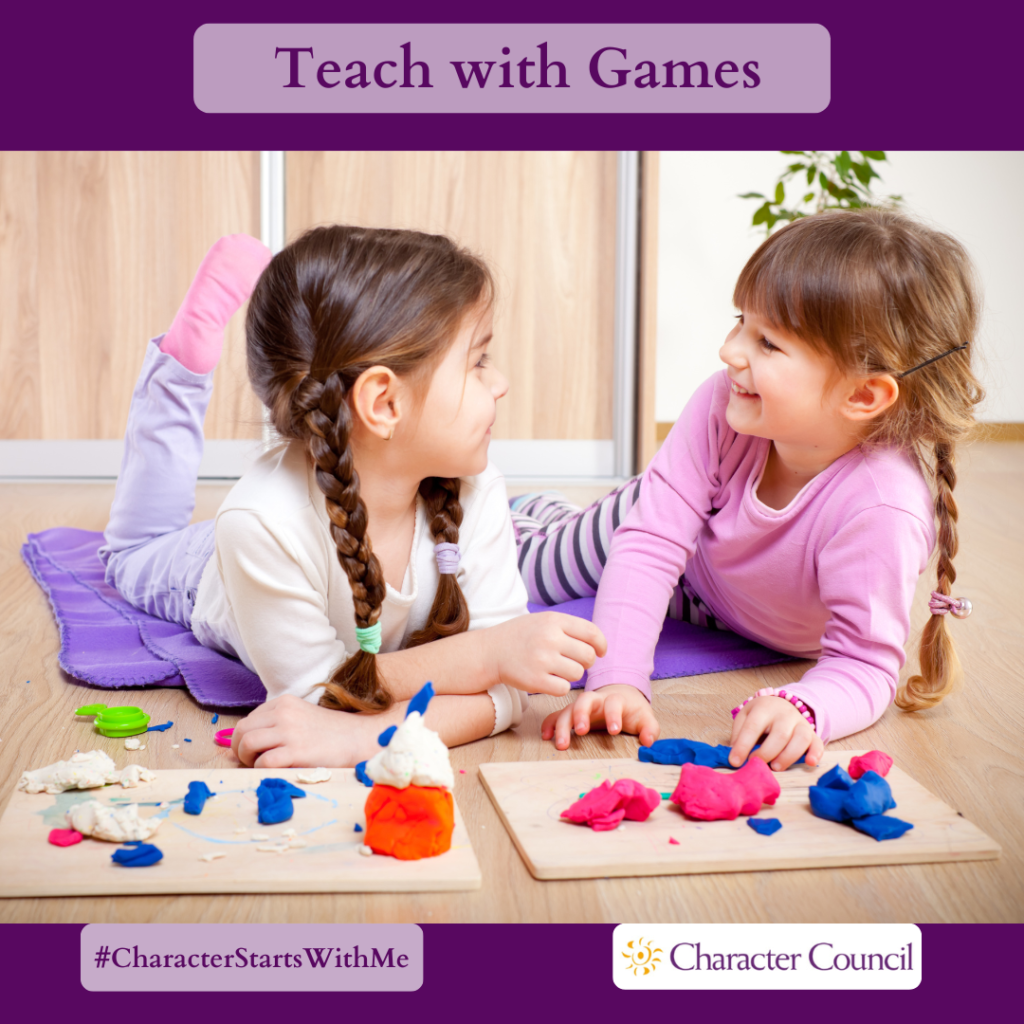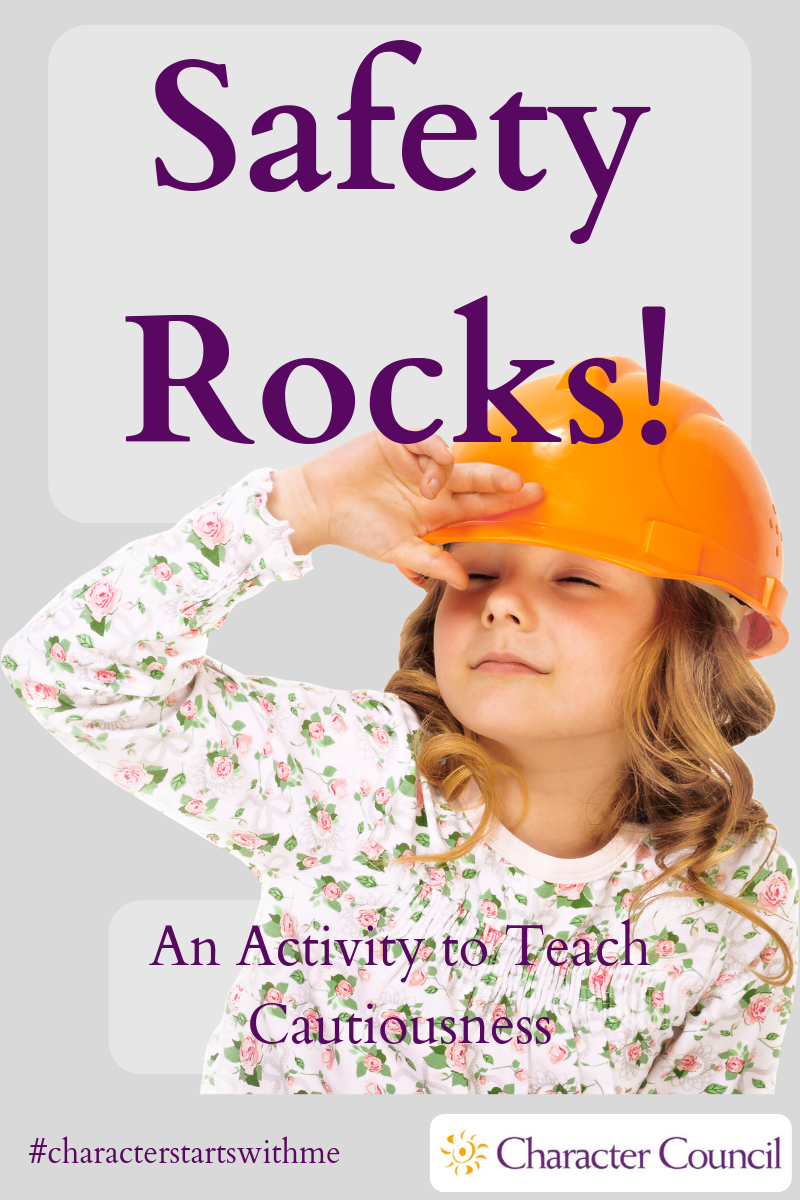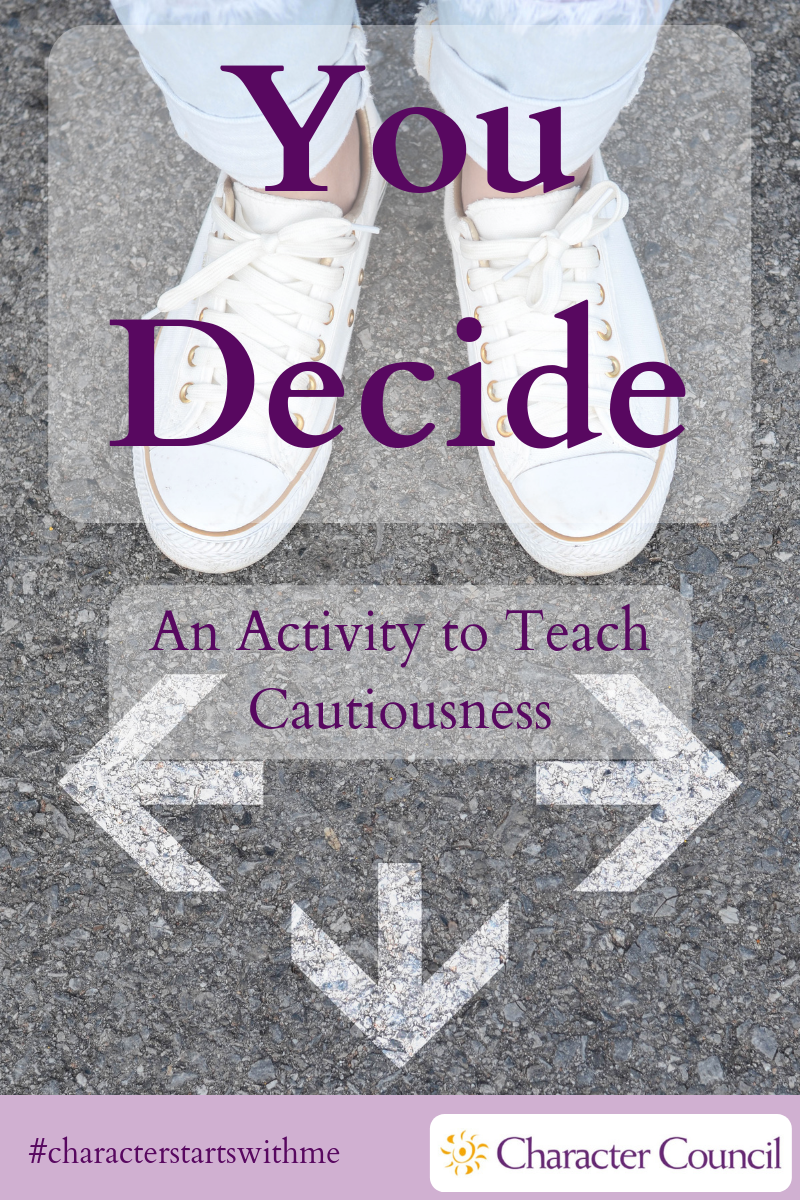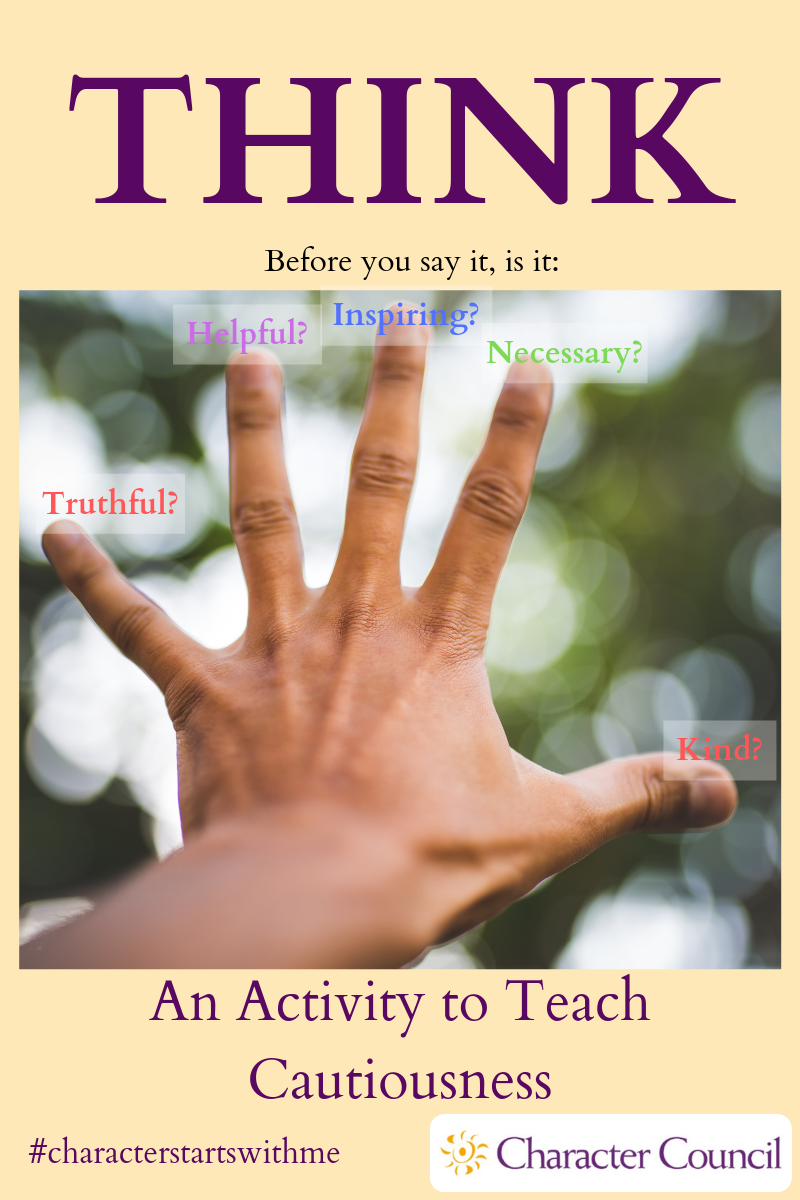
Cautiousness Activities
The activities here are fun ways to teach character. The game aspect makes the lesson more memorable. Each activity has processing questions at the end. Without processing the activity, the exercise is just a game. To make it a stronger lesson when you process it, relate the character quality to a core value that your organization promotes.
Consider picking a student to run the activity. You will need to give them time ahead of the activity to prepare. Another option is to pick a few students to run the activity for a younger classroom after you have run it for your class. Encourage your students to repeat it in the home for younger siblings or even parents.


Safety Rocks!
For this activity have the students interview their parents about safety and security precautions that they encounter on the job. Look for things such as hard hats, steel toe shoes, earplugs, safety glasses, id badges, security guards, surgical gloves, passwords, signs, locked doors, etc. You will get all kinds of answers on this. Once the items or procedures have been shared, discuss why they think businesses take safety and security so seriously. Relate these precautions to safety and security rules that families have from curfews to prescription drugs and cleaning products being stored out of the reach of small children, etc.
To process this activity, ask these or similar questions:
- Was it fun to interview your parents?
- Did you learn something about their job that you didn’t know before?
- Does knowing about all the precautions make you feel more or less safe?
- Does your family have similar safety rules as other families?
- Can you appreciate your family rules about safety more?

You Decide
Start this activity by having the students put their heads down on their desk and close their eyes. You will ask them a series of questions and they will answer by raising their hands. The questions will be a choice of two similar items and each student has to choose which they like better. Some examples are: Hamburgers or Hot Dogs; Soccer or Football; Red or Green. If they like the first choice better they raise their left hand. If they like the second choice better they raise their right hand. Compile a list of choices that are age appropriate for your class. Try to choose things that are similar so the deciding between them requires some thought. Aim for about 10-15 choices. It isn’t necessary to count or record the answers.
When you are finished with your list, ask the whole class to stand up. Designate opposite ends of the classroom as the answer areas. Read your list again and this time each student must walk to the area for that answer. Watch their behavior as they decide which group to walk towards. Do any of them look around before making a decision to see where the rest of the kids are going? When the list is done, the students can return to their seats. Ask them to think about how differently they made their decisions when no one saw their answer and when others could see what they decided. Did it make a difference? This is peer pressure. These decisions were not life-altering but it gives them some insight into their own behavior.
To process this activity, ask these or similar questions:
- Which did you like better – answering with your head down or walking around?
- When you were standing, did you look around at others before committing to a decision?
- Did you change any of your answers when you could see others’ decisions? (they don’t have to answer this one outloud)
- Did it make a difference if your answer was not a majority?
- This is called peer pressure. Will you think of this exercise next time you think that the right thing to do is different that your peers?

THINK
This activity is based on this poster that was found on Etsy.
Discuss the poster with the class. Have them think of examples that would qualify for each word and ones that would not. As a reminder, have them create their own version of the poster as follows. Have your students trace their hand. In the palm they will write the word THINK. On each finger they will write the words for each letter in the word THINK.
In case the link is no longer active the poster said:
Before you speak, THINK
T Is it Truthful?
H Is it Helpful?
I Is it Inspiring?
N Is it Necessary?
K Is it Kind?
To process this activity, ask these or similar questions:
- Was it fun to make your own poster?
- Was it easy to think of examples for each of the words?
- Could you think of examples of when you did not THINK like this before saying something?
- Could you remember a time when someone said something to you that you wish they hadn’t said? (no need to share examples).
- Will you remember how you felt when someone hurt your feelings and THINK before you say something hurtful?